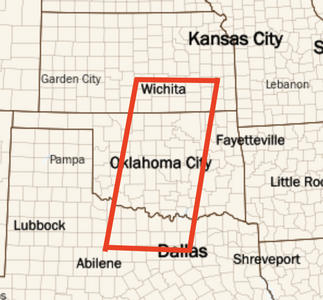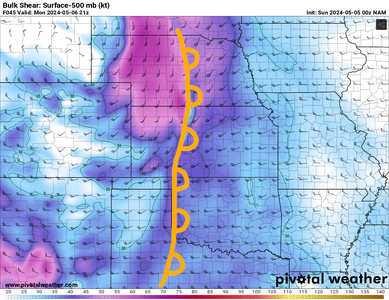Dan Robinson
EF5
Medium-range models have shown consistency and agreement on a negatively-tilted shortwave trough ejecting over the central and southern Great Plains on Monday May 6. This is shown occurring over a large warm sector with ample moisture ahead of a dryline with a breakable cap from north Texas through Nebraska.
At this early stage in the forecast cycle, models have been wavering on the timing of the wave's ejection over the Plains. This is ranging from an ideally-timed major tornado outbreak scenario to an early ejection with storms firing at mid-day. Today's runs have trended toward the latter.
From a chase trip planning standpoint, models have been trending toward this being a single-day Plains event, with subsequent events potentially being far to the east and south in the Midwest or Arklatex. Still, strong flow and deep moisture are regionally coexisting on those days and subsequent Plains overlaps of the two may come to fruition.
At this early stage in the forecast cycle, models have been wavering on the timing of the wave's ejection over the Plains. This is ranging from an ideally-timed major tornado outbreak scenario to an early ejection with storms firing at mid-day. Today's runs have trended toward the latter.
From a chase trip planning standpoint, models have been trending toward this being a single-day Plains event, with subsequent events potentially being far to the east and south in the Midwest or Arklatex. Still, strong flow and deep moisture are regionally coexisting on those days and subsequent Plains overlaps of the two may come to fruition.



